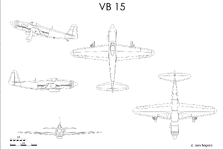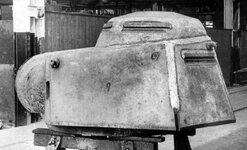Szydlowsky-Planiol supercharger offered two noticeable improvements over the run-on-the-mill superchargers of the mid-1930s:there seem to have been license problems (?) with the Szydlowsky-Planiol supercharger. Or manufacturing/cost? Several models of H-S engines seem to swap back and forth.
The Szydlowsky-Planiol supercharger never caught on in the US.
1st was that it had a variable air intake, so there was less need for throttling to happen between SL and the rated altitude.
Second was that it impeller was good - it was of a decent size, and was efficient. Both things the contribute to the improvement of high altitude power.
However, the impellers being installed from the late 1930s on all but cancelled (or outright cancelled) the advantage of the impeller of the S-P supercharger. The S-P S/C was firmly behind the curve when the 2-stage superchargers were being manufactured, ditto vs. the the turbo S/Cs.
With the wide introduction of the 2-speed drives for the S/C, as well as the variable-speed drives, the importance of the variable air intake was all but nullified. Add the wide usage of high octane fuel and/or ADI, that pushed engine power at the low and mid altitudes through the roof via the much incresed boost, and the need for variable intake is simply not needed anymore.



